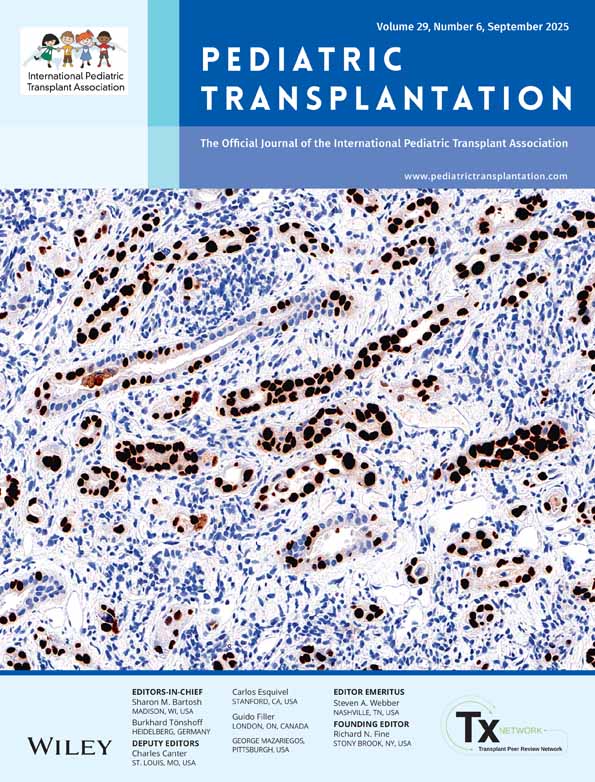Reasons why some children receiving tacrolimus therapy require steroids more than 5 years post liver transplantation
Abstract
Abstract: Tacrolimus is a potent immunosuppressive agent and has been used in liver transplantation (LTx) for nearly a decade. More than 70% of children can be maintained on tacrolimus monotherapy, without steroids, by the end of 1 yr post-Tx. This freedom from steroids does not appear to change significantly in subsequent years. The use of steroids has obvious metabolic and cosmetic disadvantages, besides affecting linear growth in children. The present study identifies why some children still require steroid therapy after successful LTx. One hundred and sixty-six consecutive pediatric patients who had undergone primary LTx between October 1989 and December 1992, were included in this study. Follow-up ranged from 6 to 9 yr (mean 7.5 ± 0.8 yr). One hundred and forty-one children were alive in November 1998 and these patients constituted the study group. Their current rate of prednisone use, reason for prednisone use, and prednisone dose were examined retrospectively. Of the 141 patients, 139 (98.5%) had stopped taking steroids at some time-point after LTx. Thirteen patients (9%) were off immunosuppression altogether (group I), 97 were undergoing tacrolimus monotherapy (group II), and the remaining 31 were receiving therapy with steroids and tacrolimus (group III). The mean prednisone dose at the last follow-up was 6.5 ± 4.9 mg/day (median 5.0 mg/day). In group III, two children were never weaned off steroids because of inadequate follow-up (both lived outside the country), and the remaining 29 children completely stopped steroid therapy at some time-point after LTx; however, prednisone was re-introduced for clinically suspected or biopsy-proven rejection in 24. Seven children in group III had completely stopped immunosuppressive therapy either as part of an immunosuppression reduction protocol (n = 3) or for suspected or proven post-transplant lymphoproliferative disorder (PTLD) (n = 4). In eleven of the 18 children in group III, requirement of steroid for rejection was thought to be related, in part, to non-compliance. In three children in group III, steroids were re-introduced for renal dysfunction, and two of these patients subsequently received a kidney Tx. In one child with cerebral ischemia, steroids were used to reduce brain edema, and another child had features of auto-immune hepatitis. Hence, almost all children can be weaned off steroids when tacrolimus is used as primary immunosuppresson after primary LTx. However, ≈ 22% of children may need re-institution of steroids because of late acute rejection or renal dysfunction. The concomitant use of other non-steroidal immunosuppressive agents with tacrolimus may further reduce the dose and rate of steroid use.




